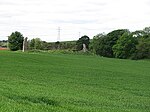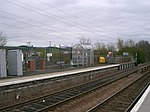Mossmorran
1985 establishments in ScotlandBuildings and structures in FifeChemical plants of the United KingdomEnergy infrastructure completed in 1985Energy infrastructure in Scotland ... and 6 more
ExxonMobil buildings and structuresNatural gas in ScotlandNatural gas infrastructure in the United KingdomNatural gas plantsNorth Sea energyUse British English from December 2016

The Mossmorran Natural Gas Liquids (NGL) plant is part of the northern North Sea Brent oil and gas field system and is located on the outskirts of Cowdenbeath, Scotland. The Mossmorran facilities comprise two plants: the Fife NGL Plant operated by Shell and the Fife Ethylene Plant operated by ExxonMobil. An associated sea-going tanker loading facility is located at Braefoot Bay, 4 miles (7 km) to the south.
Excerpt from the Wikipedia article Mossmorran (License: CC BY-SA 3.0, Authors, Images).Mossmorran
B925,
Geographical coordinates (GPS) Address Nearby Places Show on map
Geographical coordinates (GPS)
| Latitude | Longitude |
|---|---|
| N 56.097 ° | E -3.303 ° |
Address
B925
KY2 5UE
Scotland, United Kingdom
Open on Google Maps








